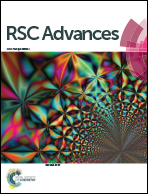Lanthanide chelate-encapsulated polystyrene nanoparticles for rapid and quantitative immunochromatographic assay of procalcitonin†
Abstract
Procalcitonin (PCT) is a potentially specific early marker of bloodstream infection and sepsis. In this work, we report, for the first time, the development of a fluorescence-based immunochromatographic strip test (IST) which employs Eu(DBM)3phen-containing nanoparticles as reporters for the detection of PCT in human serum. Experimental results demonstrate that the developed IST has an excellent ability for rapid (15 min), sensitive (0.05 ng mL−1) and quantitative analysis of PCT, and the assay results are comparable to which of the conventional enzyme-linked immunosorbent assay (ELISA). These results suggest that the developed assay could be utilized for point-of-care detection of PCT.


 Please wait while we load your content...
Please wait while we load your content...